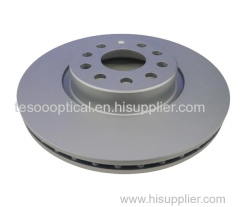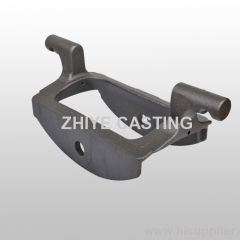
Auto Braking System Device
| Min. Order: | 1 Piece/Pieces |
|---|---|
| Payment Terms: | T/T |
| Place of Origin: | Zhejiang |
Company Profile
| Location: | Hangzhou, Zhejiang, China (Mainland) |
|---|---|
| Business Type: | Manufacturer |
Product Description
An automatic vehicle braking system device is a safety technology installed in vehicles that uses sensors and advanced algorithms to detect potential collisions. When a threat is identified and the driver doesn't react in time, the electric car braking system autonomously applies the brakes to prevent or mitigate the impact, enhancing overall road safety.
Types of Auto Car Brake Parts
Brake Calipers
Brake Discs
Brake Pads
Drum Brake Assembly
Disc Brake Assembly
Wheel Hub Bearing
Brake Booster
Clutch Cylinder
Wheel Brake Cylinder
Popular Types of Auto Brake Parts Video
Introduction of Qllino
Auto Braking System Parts
Auto Braking System Basic Components
An auto brake system in cars is a vital component of modern vehicles that helps enhance safety on the road. This system utilizes a combination of sensors, actuators, and control units to detect potential collisions and automatically apply the brakes to prevent or mitigate the impact.
One of these components is the auto brake disc, also known as a rotor. The brake disc is a circular metal plate that is mounted on the wheel hub and rotates with the wheel. When the brakes are applied, brake pads clamp down on the brake disc, generating friction that slows down or stops the rotation of the wheel.
Auto brake pads are another crucial element of the electric car braking system. These pads are made from a high-friction material and are positioned on either side of the brake disc. When the brakes are activated, the brake pads are pressed against the brake disc, creating the necessary friction to slow down or stop the vehicle.
The auto brake caliper is responsible for housing the brake pads and applying the necessary force to squeeze them against the brake disc. The caliper is either fixed or floating, depending on the type of braking system. Fixed calipers have pistons on both sides of the brake disc, while floating calipers have pistons on only one side that move the brake pads towards the disc.
Other components of an auto braking system include the brake booster, which amplifies the force applied to the brakes when the driver presses the pedal, and the brake fluid, which transfers the pressure from the brake pedal to the calipers and brake pads.
While the radar sensor, camera sensor, control unit, and actuators are critical for the autonomous braking system to operate, it is essential not to overlook the mechanical components such as the brake disc, brake pads, and brake caliper. These components work together to perform the physical action of stopping or slowing down the vehicle when a collision is detected, ensuring the overall effectiveness and safety of the car hand brake system.
How Automotive Brakes Work
Custom car brakes play a vital role in ensuring the safety of a vehicle. When the driver presses the brake pedal, the automatic car parking brake system applies friction to slow down or completely stop the vehicle. The most common type of automatic car parking brakes are disc brakes, although some vehicles still use drum brakes.
Disc brakes consist of several parts:
1. Brake pedal: When the driver presses the brake pedal, hydraulic pressure is created in the brake fluid.
2. Brake fluid: It is stored in the brake fluid reservoir and is responsible for transmitting the pressure from the brake pedal to the brake caliper or drum.
3. Brake caliper: In a disc brake system, the brake caliper is a housing that holds the brake pads and pistons. When the brake pedal is pressed, the brake fluid flows into the caliper, causing the pistons to push the brake pads against the rotor.
4. Brake pads: These are made of friction material and are attached to the brake caliper. When the brake pedal is pressed, the brake pads come into contact with the rotor, creating friction and thus slowing down the rotation of the wheels.
5. Rotor: The rotor is a metal disc that is attached to the wheel hub. When the brake pads press against the rotor, the friction converts the kinetic energy of the rotating disc into heat energy, which dissipates into the surrounding air.
6. Anti-lock Braking System (ABS): Some modern vehicles are equipped with an ABS, which prevents the wheels from locking up during braking. Developed by experienced car brake manufacturers, the ABS uses sensors to monitor the rotational speed of each wheel and modulates the brake pressure on each wheel individually to maintain traction and control.
Drum brakes operate slightly differently. Instead of brake pads and rotors, they use brake shoes and a brake drum. When the brake pedal is pressed, hydraulic pressure causes the brake shoes to be forced against the brake drum, creating friction and slowing down the vehicle.
The Role of Automatic Vehicle Braking System
The auto car brake device plays three crucial roles in modern vehicle safety. Firstly, it acts as a collision avoidance mechanism by constantly monitoring the road and identifying potential obstacles, such as vehicles or pedestrians. Secondly, the automobile braking system functions as a driver assistance tool, alerting the driver with visual and auditory warnings about impending collisions. Lastly, in situations where the driver's response is insufficient, the auto brake system in cars automatically engages the brakes to either avoid the collision entirely or minimize its impact. These roles collectively enhance road safety by providing an additional layer of protection against accidents caused by human error or unexpected hazards.
Custom Car Brakes System Device Advantages
Custom Car Brake System device offers several advantages that contribute to improved road safety and accident prevention:
Collision Avoidance:
The automatic park brake device employs advanced sensors and real-time monitoring to detect potential collisions. By identifying obstacles such as vehicles or pedestrians in the vehicle's path, it allows the auto braking system to take proactive measures to avoid accidents.
Reduced Impact Severity:
In cases where a collision is imminent and the driver's response is insufficient, the auto brake parts autonomously applies the brakes to reduce the impact's severity. This swift intervention of custom car brakes can significantly decrease the force of the collision, potentially saving lives and minimizing property damage.
Mitigation of Human Error:
Human errors, like distractions or delayed reactions, can lead to accidents. The Auto Braking System device acts as a safety net, intervening when necessary to prevent accidents caused by human oversight.
Enhanced Driver Awareness:
The automatic park brake device serves as a constant reminder to drivers about potential hazards. Visual and auditory warnings keep drivers engaged and alert, promoting better situational awareness and encouraging safer driving habits.
Safety in Diverse Conditions:
The car hand brake system operates consistently in various driving conditions, including adverse weather, low visibility, or nighttime driving. This adaptability ensures that the system remains effective and reliable regardless of environmental challenges.
The auto braking system device's advantages encompass collision avoidance, reduced impact severity, mitigation of human error, enhanced driver awareness, and safety under diverse conditions. These benefits collectively contribute to a safer driving experience and a significant reduction in accidents on the road.
As one of auto brake manufacturers, we can provide kinds of car brakes for sale, if you have needs, please contact us.







